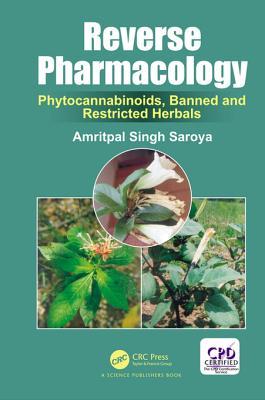Read Reverse Pharmacology: Phytocannabinoids, Banned and Restricted Herbals - Amritpal Singh Saroya file in PDF
Related searches:
Reverse Pharmacology and Systems Approaches for Drug
Reverse Pharmacology: Phytocannabinoids, Banned and Restricted Herbals
EJBPS ABSTRACT - European Journal of Biomedical and
Reverse Pharmacology and Phytomedicine Taylor & Francis Group
(PDF) Reverse Pharmacology INTRODUCTION AND BACKGROUND
International Journal of Reverse Pharmacology and Health Research
Phenotypic Screening and Target-Based Drug Discovery: Is it
This chapter discusses the role of phytomedicine in drug discovery on the basis of reverse pharmacology.
This is known as reverse pharmacology, which is defined as the science of integrating documented clinical experiences and experiential observations into leads, through transdisciplinary exploratory studies, and further developing these into drug candidates through robust preclinical and clinical research.
Title: reverse pharmacology: fast track path of drug discovery author: alina arulsamy subject: reverse pharmacology (rp) is a science of integrating documented experiential hits, into leads by transdisciplinary exploratory studies and further developing into drug candidates by experimental research.
A “reverse pharmacology” approach to developing an anti-malarial phytomedicine was designed and implemented in mali, resulting in a new standardized herbal anti-malarial after six years of research. The first step was to select a remedy for development, through a retrospective treatment-outcome study. The second step was a dose-escalating clinical trial that showed a dose-response.
Siddhartha dutta*, sudeshna banerjee, sahil kumar and ayush jain.
Traditionally, reverse pharmacology has been used to iden-tify endogenous and/or surrogate ligands for orphan gpcrs. This involves the expression of the orphan gpcr in a cellular system and testing large libraries of ligands, in a high-throughput manner, for activity in a functional assay.
In reverse pharmacology, also known as target based drug discovery (tdd), a biological target is hypothesized to be disease modifying.
Reverse pharmacology (rp) is a science of integrating documented experiential hits, into leads by transdisciplinary exploratory studies and further developing into drug candidates by experimental research.
Drug discovery, at the bedside, is followed in reverse pharmacology (rp) by the relevant science of drug development for safety, efficacy, and mechanistic understanding.
This is known as reverse pharmacology, which is defined as the science of integrating documented clinical experiences and experiential observations into leads,.
In the field of drug discovery, reverse pharmacology also known as target-based drug discovery (tdd), a hypothesis is first made that modulation of the activity of a specific protein target will have beneficial therapeutic effects.
In forward pharmacology, you start with a promising drug and years later figure out why it works. In reverse pharmacology, you start with a promising target (such.
Reverse pharmacology • definition: – reverse pharmacology is the science of integrating documented clinical/experiential hits, into leads by transdisciplinary exploratory studies and further developing these into drug candidates by experimental and clinical research.
Reverse pharmacology (rp) is a science of integrating documented experiential hits, into leads by transdisciplinary exploratory studies and further developing into drug candidates by experimental research. In this approach, the candidate travels a reverse path from ‘clinics to laboratory’ rather than classical ‘laboratory to clinics’.
Target-based approach for drug discovery, also called ‘reverse pharmacology,’ generally starts with target identification of a disease of interest. Increased understanding of the molecular basis of a disease has expanded the utility of a target-based approach.
In reverse pharmacology, agents that have a history of therapeutic activity are the pharmacological effect of traditional drug itself and that of its components.
This simple biophysical assay allowed the identification and ranking of multiple novel agonists and permitted classification of the efficacy of each hit in agonist, antagonist, or inverse agonist categories, thereby opening doors to nanobody‐enabled reverse pharmacology.
The scope of reverse pharmacology is to understand the mechanism of action at multiple levels of biological organization and to optimize safety, efficacy and acceptability of the leads in natural products, based on relevant science.
Apr 19, 2016 reverse pharmacology for developing an anti-malarial phytomedicine.
Reverse pharmacology on corydalis yanhusuo: dehydrocorybulbine, analgesia and antipsychosis and methionine-induced animal models of schizophrenia.
Reverse pharmacology and systems approaches for drug discovery and development.

Post Your Comments: